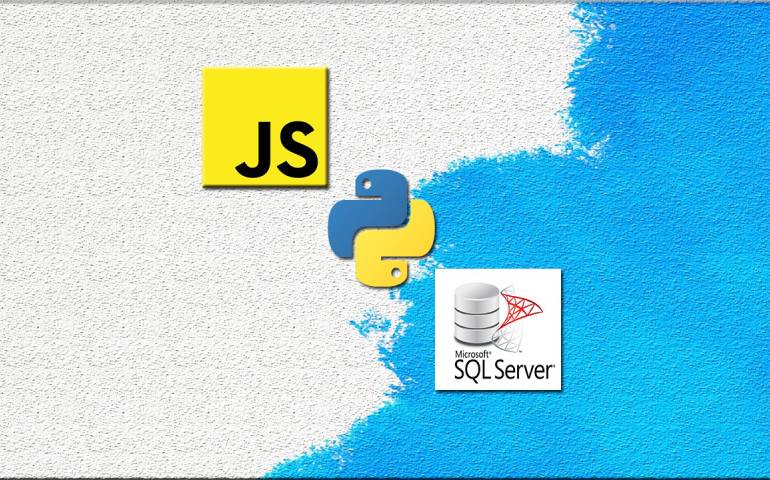No products in the basket.
Overview Welcome to the comprehensive course on learning three of the most important programming languages for data science: Python, JavaScript, and Microsoft SQL. In this course, you will learn the fundamentals of each language and how they can be applied to data science. The course begins with an introduction to JavaScript, its syntax, and its basic constructs. You will learn about JavaScript operators, conditional statements, control flow statements, functions, error handling, and client-side validations. Next, you will dive into the world of Python, one of the most popular programming languages in data science. You will learn about Python basics, including …
Course Price:
Course Duration:
22 hours, 47 minutes
Total Lectures:
186
Total Students:
46
Average Rating:
4.5
Overview
Welcome to the comprehensive course on learning three of the most important programming languages for data science: Python, JavaScript, and Microsoft SQL. In this course, you will learn the fundamentals of each language and how they can be applied to data science. The course begins with an introduction to JavaScript, its syntax, and its basic constructs. You will learn about JavaScript operators, conditional statements, control flow statements, functions, error handling, and client-side validations. Next, you will dive into the world of Python, one of the most popular programming languages in data science. You will learn about Python basics, including strings, operators, data structures, conditional statements, control flow statements, and core games. Then, you will explore Python functions and their application to data science using args, and KW args. You will learn about object-oriented programming in Python, including methods, classes, objects, inheritance, polymorphism, encapsulation, and abstraction. You will explore OOPs games and learn how to implement OOPs concepts in data science. Additionally, you will learn about Python modules and packages and how to use them to organize and structure code in data science projects. You will also learn about error handling in Python. Finally, you will learn about Microsoft SQL, a popular relational database management system used in data science. You will learn about SQL statements, filtering data, functions, joins, advanced commands, structure and keys, queries, structure queries, constraints, and backup and restore. Throughout the course, you will work on a Python project that will help you apply what you've learned and prepare you for real-world data science tasks. By the end of this course, you will have a solid foundation in Python, JavaScript, and Microsoft SQL, and be equipped with the skills necessary to apply them to data science. You will be able to write code to analyze and manipulate data, as well as use Microsoft SQL to store, retrieve and manipulate data from databases.What Will You Learn?
- Basic concepts and syntax of Python and JavaScript programming languages
- Strings, data structures, operators, conditional statements, control flow statements, functions, and error handling in Python and JavaScript
- Client-side validations in JavaScript
- Advanced commands, structure and keys, queries, structure queries, and constraints in Microsoft SQL
- Object-oriented programming (OOP) concepts, including classes, objects, inheritance, polymorphism, encapsulation, and abstraction in Python
- Using Python for data science, including core games, args, KW args, and projects
- Modules, packages, and error handling in Python
- Introduction to Microsoft SQL, including statements, filtering data, functions, and joins
Who Should Take Python + JavaScript + Microsoft SQL for Data science Course?
- Aspiring data scientists or analysts who want to learn to program.
- Programmers who want to expand their skill set by learning new programming languages.
- IT professionals who want to learn how to use Python, JavaScript, and Microsoft
- SQL for data manipulation and analysis
- Students or professionals in fields related to data science, such as statistics, mathematics, or computer science.
- Anyone who wants to develop skills in Python, JavaScript, and Microsoft SQL.
Requirements
While no prior experience with Python, JavaScript, or Microsoft SQL is required to take the "Learn Python + JavaScript + Microsoft SQL for Data Science" e-learning course, there are some requirements to ensure that you have a successful learning experience. Here are some of the basic requirements:- A computer or laptop with internet access
- A web browser such as Google Chrome or Mozilla Firefox
- Basic knowledge of programming concepts and syntax
- A willingness to learn and practice programming, as well as an interest in data science and analytics.
Course Curriculum
-
- Introduction 00:05:00
- How to ask great questions 00:01:00
- Installing Code Editor 00:04:00
- What is JavaScript 00:09:00
- Hello World Program 00:14:00
- Getting Output 00:11:00
- Internal JavaScript 00:13:00
- External JavaScript 00:09:00
- Inline JavaScript 00:04:00
- Async and defer 00:06:00
- What is Source code 00:09:00
-
- Variables 00:13:00
- Data Types 00:10:00
- Numbers 00:06:00
- Strings 00:06:00
- String Formatting 00:05:00
- Arithmetic operators 00:07:00
- Assignment operators 00:03:00
- Comparison operators 00:06:00
- Logical operators 00:08:00
- While loop 00:09:00
- Do-while loop 00:02:00
- For loop 00:08:00
- Coding Exercise 00:02:00
- Solution for Coding Exercise 00:02:00
- Try-catch 00:05:00
- Try-catch-finally 00:17:00
- Introduction to Python 00:02:00
- Python vs Other Languages 00:04:00
- Why Its Popular 00:04:00
- Command Line Basics 00:07:00
- Python Installation (Step By Step) 00:06:00
- PyCharm IDE Installation 00:08:00
- Getting Start PyCharm IDE 00:05:00
- First Python Hello World Program 00:07:00
- Strings 00:05:00
- String Indexing 00:05:00
- String Slicing 00:04:00
- String Built-in Functions 00:09:00
- Formatting String (Dynamic Data) 00:05:00
- Arrays in Earlier 00:02:00
- Lists 00:06:00
- Add List Items 00:03:00
- Remove List Items 00:02:00
- Sort Lists 00:03:00
- Join Lists 00:10:00
- Tuples 00:09:00
- Update tuples 00:07:00
- Join tuples 00:02:00
- Dictionaries 00:00:00
- Add Dictionary Items 00:04:00
- Remove Dictionary Items 00:03:00
- Nested Disctionaries 00:04:00
- Sets 00:04:00
- Add Set Items 00:03:00
- Remove Set Items 00:01:00
- Join Set Items 00:04:00
- Flow Charts 00:06:00
- While Loops Statement 00:10:00
- For Loops Statement 00:06:00
- The range() Function 00:07:00
- Nested Loops 00:03:00
- 2D List using Nested Loop 00:04:00
- Creating a Function 00:05:00
- Calling a Function 00:06:00
- Function with Arguments 00:05:00
- Project Overview 00:03:00
- ATM Realtime Project 00:13:00
- Introduction to methods 00:06:00
- Create a method 00:09:00
- Method with parameters 00:14:00
- Method default parameter 00:06:00
- Multiple parameters 00:05:00
- Method return keyword 00:04:00
- Method Over loading 00:05:00
- Introduction 00:04:00
- Inheritance 00:13:00
- Polymorphism 00:14:00
- Assessment Test 00:03:00
- Solution for Assessment Test 00:03:00
- Dice Game 00:06:00
- Card and Deck Game Playing 00:07:00
- Errors – Types of Errors 00:08:00
- Try – Except Exceptions Handling 00:07:00
- Try-Except-Finally Blocks 00:07:00
- SQL statement basic 00:14:00
- Select Statement 00:16:00
- Select Distinct 00:17:00
- Column AS Statement 00:09:00
- Count 00:10:00
- Overview of Group By 00:08:00
- Aggregation Function – SUM() 00:12:00
- Aggregation Function – MIN()-MAX() 00:08:00
- Group BY – One(theory) 00:12:00
- Group BY – Two(practical) 00:14:00
- Having 00:15:00
- Right Outer Join 00:08:00
- Union 00:07:00
- Basic of Advanced SQL Commands 00:04:00
- Timestamp 00:12:00
- Extract from Timestamp 00:06:00
- Mathematical Scalar Functions 00:12:00
- String Functions 00:18:00
- SubQuery 00:07:00
- Insert query 00:06:00
- Update query 00:08:00
- Delete query 00:07:00
- Check Constraint 00:14:00
- Not Null Constraint 00:12:00
- Unique Constraint 00:11:00
- Order Certificate 00:05:00
New Courses
Blogs
20
Jul'23
ADHD Training for Teachers: Empowering Educators to Support Students with Attention Challenges
Relationships may be severely harmed by narcissistic behaviours, leaving emotional scars and...
20
Jul'23
Narcissistic Behaviour and Relationships: Understanding the Impact and Finding Healing
Relationships may be severely harmed by narcissistic behaviours, leaving emotional...
20
Jul'23
Childhood Trauma in Adults
What Is Childhood Trauma? Childhood trauma refers to distressing or...
20
Jul'23
Creating A Social Media Strategy
Set Clear Objectives:The first step in developing a successful social media...
20
Jul'23
Neuro-Linguistic Programming Techniques
Neuro-Linguistic Programming (NLP) is a fascinating and widely acclaimed approach...
19
Jul'23
Acceptance and Commitment Therapy in the UK
What is acceptance and commitment therapy? Acceptance and Commitment Therapy...




